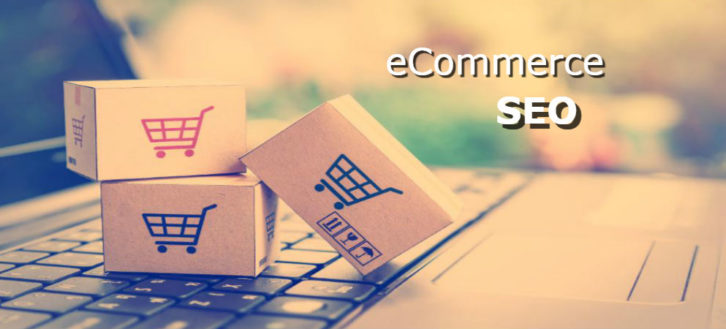eCommerce is the new shopping mall. Everyone, from large retail chains to your local dog sitter, is using their social media platforms and websites to sell or encourage purchasing their products and services. eCommerce has become a strong force in global marketing and sales. This demand pushes businesses to hire eCommerce developers to build their online platform.
Employing expert eCommerce website developers reduces the headache of setting up and maintaining one. But before we get ahead of ourselves and talk about topics like competitive eCommerce developer salary or which API strategy will work best with your eCommerce website and marketing campaign, let us know more about conversion rate and how we eCommerce development can improve it.

What is Conversion Rate?
Conversion rate is the rate at which people visit your website or mobile platform and complete a transaction or action. It is a simple concept that is versatile enough to apply to any type of industry or business. Conversion can mean different things, but is most commonly associated with:
- Purchases
- Add-to-cart
- Form submissions
- Subscription sign ups
- Add to wishlist
- A share in any social media platform
Providing a great user and customer experience often leads to successful transactions and actions, such as increased traffic, subscriptions, and/or purchases. The goal of improving “conversion” is to enhance the shopping experience and positively impact business KPIs, which is mostly related to sales.
Conversion rate is one of the markers that businesses use to gauge the performance of their platforms and products as well as gain insight as to the trends and preferences of your customers. When the user or customer experience is improved, it reflects on the business’ conversion rate. The quality of the eCommerce website and the corresponding skills of eCommerce developers of such a website is important in improving conversion rates.
How Do You Even Calculate?
The conversion rate is simple to calculate when you have all the important factors accounted for. The general formula for calculating the conversion rate is
(number sales) / (number of visitors) x 100 = conversion rate (%).
This formula can be further tailored to the type of industry. Ecommerce platforms, for example, calculate their conversion rate as
Conversion rate = Sessions with transactions / Total sessions.
Just like how you calculate conversion rate varies across industries, the average conversion rate is not a fixed value either. This value fluctuates depending on key indicators, such as type of industry, country, season, demographics, and such. For example, in clothing retail, the average conversion rate is around 2.10%. While the average conversion rate for electrical and commercial equipment is around 2.00% and 3.74% for Health and Wellbeing. Ecommerce, overall, has an average conversion rate of 1.71% as of July 2019.

What is fixed is the framework of the formula used, and what you can control is the key performance indicators or KPIs of your chosen industry that will serve as criteria you can build on to calculate the average conversion rate. It is best to research third party metrics, averages, and KPIs to gain a better idea of what to use as KPIs and what the industry benchmarks are.
How can you say if you have a good conversion rate? Taking into account matters that are out of your control such as disasters – either manmade or natural -, as long as it is not well below the industry average and it is better than your previous one, then you’re on the right path!
How Important Is It?
Conversion rate is one of the most important digital marketing and SEO metrics. Conversion rates cover a broad spectrum of actions that enhance online consumer experience and impact the conversion rate and reflect a business’s digital performance.
Conversion rates help businesses forecast and assess their products and business models. With the data collected, businesses can see their strengths and weaknesses and adapt their campaigns and business models to achieve the best possible outcome. Improving conversion rate enables you to not only save resources but also enhance your online consumer experience.
There are other SEO metrics to take into account, like Click-Through-Rate (CTR) and Cost-Per-Click (CPR), but the conversion rate is relatively easier to measure and has coverage. Finding ways to improve your conversion rate opens numerous opportunities at a more manageable cost and will result in much more tangible and actionable results.
How Do You Improve Conversion Rate?
The focus of improving eCommerce conversion rates is enhancing your website customer experience. Marketing campaigns and tools are half of this endeavor, the other half is employing expert eCommerce web developers to make the necessary tools. First, ensure that you have the expertise needed to build such user experience, namely an eCommerce developer or an eCommerce development team.

Make Purchasing an Easy and Well-Rounded Consumer Experience
Just having a pretty website does not assure a sale, a great shopping experient bumps up the potential of closing that sale. Ensure actions and navigation to purchase are within a single-click range. Don’t make it cumbersome! Give users options, like carts, wishlists, and subscriptions such that even though they won’t complete it now they can visit and buy later.
Work with your eCommerce development team in ensuring that your website user experience is convenient, responsive, intuitive, and inviting! Make users feel that they have all they would need to complete a transaction, without burdening them with complex navigations and business rules. Make buying fun and convenient!
Make Products More Appealing to Consumers
Personalization is popular with eCommerce websites and other platforms. This ensures that products and actions presented to users are curated to match their preferences. Enable your eCommerce development team to use AI or machine learning tools to collect and analyze consumer data. And then use these results to provide a more personalized online experience. Because what makes a satisfying purchase if not buying products tailored to your needs.
Enhance and Enliven Your Online Presence
Grow and enhance your social media campaign. Nearly everyone is on some form of social media, and have an account accessible to those platforms and being proactive online helps build connections and spread the word about your business and website. Have your eCommerce developer add your social media links to your website, enable social media logins, share those social media statistics, and urge visitors to like, comment, or subscribe to your social media accounts! Also, utilize CRM tools integrating your eCommerce website with ERP systems to better manage them. This makes it easier to keep track of everything about your eCommerce websites.
Ecommerce Conversion Rate and Ecommerce Web Developers: A Match Made in Digital Verse
What clinches it for businesses and their eCommerce conversion rates is their website, thus working with skilled eCommerce developers is essential. There is a lot to consider for this collaboration to work, such as eCommerce developer salary, development scope, and timelines, as well as budget and resources.
However, the benefits gained from such a partnership is more than worth the trouble. Ecommerce development collaboration enables businesses to convey their business goals and marketing campaign objectives, and in turn, eCommerce developers design and develop the needed tools and platform to accomplish them.
With a marketing team understanding of market trends and demands, coupled with eCommerce web developers’ skills, businesses can develop and maintain an eCommerce website capable of increasing and maintaining interest, consumer traffic, and improving eCommerce conversion rate.


